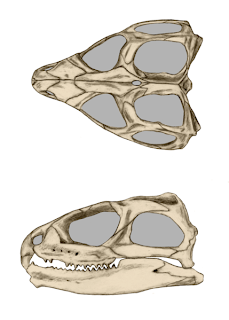Yesterday was productive I can see an end to the boxes what need sanding. I might finish this weekend.
Art
goal for the week 17.25 hrs
today
sanding
Animal
Elasmotherium, autor - Bogdanov,2006
Mythology
A prehistoric Eurasian rhino (Elasmotherium sibircum) has gotten linked into unicorn mythology. Willy Ley a German scientist better known for his work in rockets got into cryptozoology a bit on the side and suggested, among other things, that the unicorn legend may have come from a population of Elasmotherium surviving into historical times. As evidence he cites the account of Ahmad Idn Fadlan an ambassador from the ruler of Zaragoza who left Baghdad in 921 and traveled far to the north. Ahmad Idn Fadlan wrote an account of a people he called the Rus, that were very probably the Vikings, somewhere in the accounts of his travels he also wrote about a strange beast with a single horn and how the people hunted it. This account Willy Ley is attributing to that Elasmotherium population. I can't find any evidence that Ahmad Idn Fadlan's account got mixed into the legend of the Karkadann, a ferocious middle eastern unicorn. The Karkadann being what that account would probably most resemble, but I also have not found any depictions of the Karkadann from prior to 921 so I suppose it is possible the account was an influence, though other rhinos seem more likely.
Karkadan from a Persian manuscript

























 The Jamaican fruit bat (Artibeus jamaicensis) inhabits Central America and northern South America. They are said to have a pleasant smell like that of perfumed soap. These bats have one of the most efficient digestive systems among vertebrates and can process food all the way through it's system in under 30 minutes, it likely does not use microbial fermentation to help break down it's food. This fast digestion makes it a very important seed distributer, as seeds are still viable after the process. They also have an unusual mobbing behavior, when one member of the bat's group lets out a distress call the rest of the group shows up and attacks the predator. Jamaican fruit bats have also been known to make tents out of large leaves by biting the stems at key points to create a little shelter. Their wings have two types of fast twitch flight muscles that give it a greater range of maneuverability then many bats.
The Jamaican fruit bat (Artibeus jamaicensis) inhabits Central America and northern South America. They are said to have a pleasant smell like that of perfumed soap. These bats have one of the most efficient digestive systems among vertebrates and can process food all the way through it's system in under 30 minutes, it likely does not use microbial fermentation to help break down it's food. This fast digestion makes it a very important seed distributer, as seeds are still viable after the process. They also have an unusual mobbing behavior, when one member of the bat's group lets out a distress call the rest of the group shows up and attacks the predator. Jamaican fruit bats have also been known to make tents out of large leaves by biting the stems at key points to create a little shelter. Their wings have two types of fast twitch flight muscles that give it a greater range of maneuverability then many bats.








